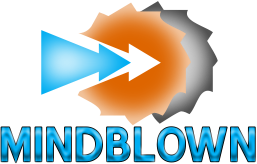Understanding body language is a powerful tool that can greatly improve your communication skills and relationships. By mastering the art of interpreting gestures, reading body signals, and decoding facial expressions, you can connect with others on a deeper level.
Nonverbal communication plays a crucial role in conveying emotions, establishing rapport, and building trust. In this section, we will explore the importance of understanding body language in effective communication.
Key Takeaways:
- Interpreting body language is essential for effective communication and successful interpersonal interactions.
- Follow a cycle of learning, practice, review, feedback, and implementation to improve your body language skills.
- Learning from reliable sources and avoiding pseudoscientific claims is crucial in mastering body language.
- Practicing specific elements of body language and gradually making changes can enhance the desired perception.
- Reviewing oneself and seeking feedback from others helps fine-tune body language skills.
The Role of Body Language in Communication
Body language plays a crucial role in building trust, conveying emotions, and establishing rapport between individuals. It is a powerful form of nonverbal communication that can greatly enhance our ability to connect with others on a deeper level.
Recognizing and interpreting body language cues is essential for understanding the true meaning behind someone’s words. By decoding nonverbal cues such as facial expressions, gestures, and posture, we can gain valuable insights into a person’s thoughts and feelings. This can help us navigate social interactions more effectively and respond appropriately to the emotions being conveyed.
Verbal and nonverbal communication are closely intertwined. Understanding body language cues not only allows us to accurately interpret the messages being conveyed but also enables us to align our own nonverbal signals with our verbal communication. By using open body language, maintaining eye contact, and mirroring others’ gestures, we can enhance our overall communication skills and create a positive impression.
The Importance of Context in Interpreting Nonverbal Cues
“Pay attention to people’s gestures, body movements, and eye contact. They often reveal more than words ever could.” – Unknown
Interpreting nonverbal cues is not solely based on individual gestures or expressions; it also depends on the surrounding context. Whether in face-to-face interactions or virtual meetings, understanding the context is crucial for accurately interpreting body language. Factors like cultural norms, personal history, and the environment can influence how nonverbal cues are expressed and understood.
In virtual meetings, it is important to eliminate distractions and create a conducive environment for effective communication. This includes minimizing background noise, ensuring good lighting, and maintaining a professional appearance. By being mindful of both the nonverbal cues and the context, we can better navigate communication barriers in virtual settings.
Understanding and utilizing body language effectively can lead to stronger connections, improved relationships, and successful communication in both personal and professional settings. By paying attention to the signals we send and receive, we can enhance our ability to connect with others and create meaningful interactions.
Learning and Practicing Body Language
Mastering body language requires a commitment to continuous learning, deliberate practice, and seeking feedback for improvement. To begin this journey, it is essential to learn from reliable sources that provide accurate and evidence-based information on body language analysis. By avoiding pseudoscientific claims and focusing on reputable resources, you can develop a solid foundation of knowledge.
Once you have gained the necessary knowledge, it is time to put it into practice. Practicing specific elements of body language, such as maintaining eye contact, using open body language, and using appropriate gestures, allows you to refine your skills and become more proficient in conveying your messages effectively. Gradually making changes to align your body language with the desired perception helps you create a positive impression and build better connections.
Remember, Rome wasn’t built in a day. Improvement in body language takes time and consistent effort. By reviewing yourself and seeking feedback from others, you can gain valuable insights and identify areas for further development. This feedback loop is crucial in fine-tuning your body language skills and making necessary adjustments.
Implementing improved body language in important situations becomes natural with enough practice. By incorporating these techniques into your everyday communication, you will not only enhance your interpersonal skills but also build trust and establish rapport with others. The impact of body language extends beyond just words and can greatly contribute to successful communication in both personal and professional settings.
| Key Points | Actions |
|---|---|
| Learn from reliable sources | Seek out books, courses, or experts who provide evidence-based guidance on body language analysis. |
| Practice specific elements | Focus on maintaining eye contact, using open body language, and incorporating appropriate gestures. |
| Review and seek feedback | Evaluate your performance and ask for feedback from trusted individuals to identify areas for improvement. |
| Implement in important situations | Put your improved body language skills into action during important conversations or presentations. |
By following this cycle of learning, practice, review, feedback, and implementation, you can continuously enhance your body language skills and become a more effective communicator. Remember, body language speaks louder than words, and mastering it can open doors to stronger connections and successful communication.
Enhancing Your Body Language Skills
To enhance your body language skills, it is essential to maintain good eye contact, demonstrate open body language, and subtly mirror the gestures and mannerisms of those around you. These techniques can greatly enhance your communication skills and help you establish rapport and trust with others.
One of the most important aspects of effective body language is maintaining eye contact. This simple yet powerful gesture shows that you are engaged and interested in the conversation. It also helps create a connection between you and the person you are communicating with. By making eye contact, you convey confidence and attentiveness.
In addition to eye contact, open body language is crucial for effective communication. This means keeping your arms uncrossed, standing or sitting up straight, and facing the person you are speaking with directly. Open body language demonstrates that you are approachable, receptive, and ready to actively engage in the conversation.
Another technique to enhance your body language skills is mirroring others. Subtly mirroring the gestures, postures, and even the tone of voice of the person you are talking to can help establish a sense of connection and empathy. However, it’s important to do this naturally and without appearing imitation. Mirroring should be done in a subtle and genuine manner to foster a sense of rapport and understanding.
| Techniques to Enhance Body Language |
|---|
| Maintain good eye contact |
| Demonstrate open body language |
| Subtly mirror the gestures and mannerisms of others |
In conclusion, mastering the art of understanding body language is crucial for effective communication. By enhancing your body language skills through maintaining eye contact, demonstrating open body language, and subtly mirroring others, you can create stronger connections and establish successful communication in both personal and professional settings.
Interpreting Nonverbal Cues in Context
Interpreting nonverbal cues accurately requires considering the context of the situation, whether it be in-person interactions or virtual meetings. In face-to-face encounters, it is essential to pay attention to the physical environment and individual dynamics between participants. Mirroring others and maintaining eye contact can establish rapport and convey interest. Additionally, using open body language, such as uncrossed arms and an upright posture, projects confidence and approachability.
Virtual meetings, on the other hand, present unique challenges in interpreting nonverbal cues. With limited visual information, it becomes crucial to make the most of available cues. Maintaining eye contact by looking directly into the camera can create a sense of connection and attentiveness. To enhance communication effectiveness, consider using hand gestures within the frame, as they help reinforce your message and engage the audience.
Eliminating distractions is also vital in virtual meetings to ensure accurate interpretation of nonverbal cues. Find a quiet space, free from interruptions, and minimize background noise. This allows you to focus on the speaker’s facial expressions, vocal tone, and other subtle cues that contribute to understanding their message. By eliminating visual and auditory distractions, you can fully engage with the speaker and demonstrate active listening.
| Tips for Interpreting Nonverbal Cues: |
|---|
| 1. Pay attention to the physical environment |
| 2. Maintain eye contact and use open body language in face-to-face interactions |
| 3. Look directly into the camera and use hand gestures in virtual meetings |
| 4. Find a quiet space and minimize distractions during virtual meetings |
By considering the context, whether it be in-person or virtual, and implementing these tips, you can enhance your ability to accurately interpret nonverbal cues. Remember, effective communication extends beyond words, and understanding body language is key to building strong connections and successful interactions in both personal and professional settings.
Conclusion
By mastering the art of understanding body language, you can unlock the potential of nonverbal communication and enhance your overall communication skills and relationships. Body language plays a significant role in building trust, conveying emotions, and establishing rapport in both personal and professional settings.
To improve your body language, it is important to follow a cycle of learning, practice, review, feedback, and implementation. Learning from reliable sources and avoiding pseudoscientific claims is crucial in developing accurate interpretations. Practicing specific elements of body language and gradually making changes to align with desired perception is recommended.
Reviewing yourself and seeking feedback from others helps fine-tune your body language skills. With enough practice, implementing improved body language in important situations becomes natural. Maintaining eye contact, using open body language, and mirroring others can enhance your communication skills and leave a positive impression.
Interpreting nonverbal cues in context is vital, whether in face-to-face interactions or virtual meetings. Understanding the surroundings and eliminating distractions will help you accurately interpret nonverbal cues. By incorporating these tips into your communication style, you can create stronger connections and achieve successful communication in various aspects of your life.
FAQ
Why is understanding body language important?
Understanding body language is important because it plays a significant role in effective communication and successful interpersonal interactions. It helps build trust, convey emotions, and establish rapport.
How can I improve my body language?
To improve your body language, it is important to follow a cycle of learning, practice, review, feedback, and implementation. Learn from reliable sources, practice specific elements of body language, review yourself, seek feedback from others, and gradually make changes to align with your desired perception.
What are some practical tips for enhancing body language?
Some practical tips for enhancing your body language skills include maintaining eye contact, using open body language, and mirroring others. These techniques can help improve your communication skills and create a positive impression.
How should I interpret nonverbal cues in different contexts?
Interpreting nonverbal cues in different contexts requires considering the surrounding context. Whether in face-to-face interactions or virtual meetings, understanding the context helps interpret nonverbal cues accurately. In virtual meetings, eliminating distractions and focusing on nonverbal cues become particularly important.
What are the key takeaways about body language and nonverbal communication?
The key takeaways are that body language and nonverbal communication are crucial in building successful communication and stronger connections. By understanding and improving your body language skills, you can enhance your overall communication abilities in both personal and professional settings.

